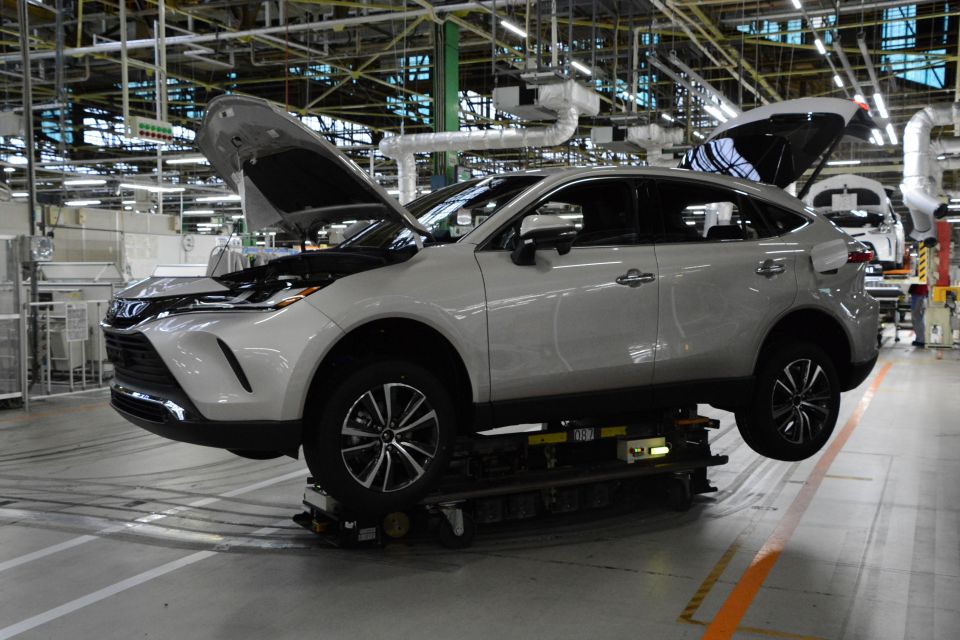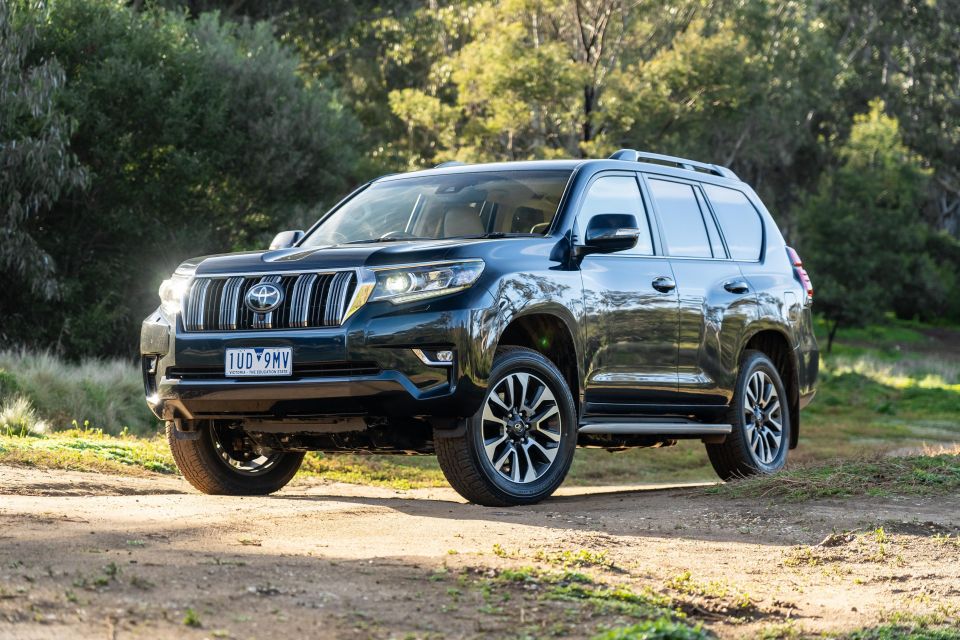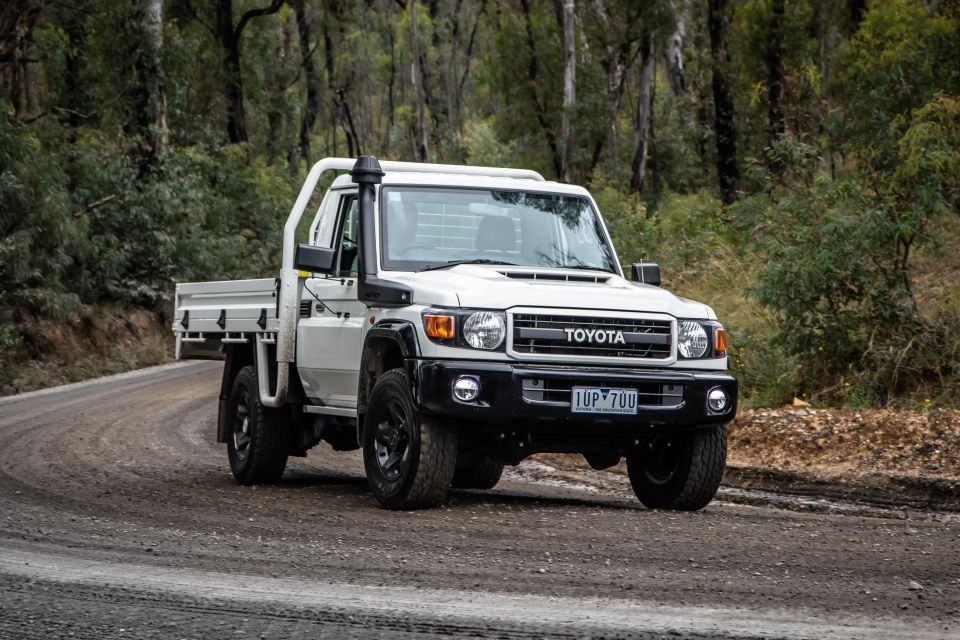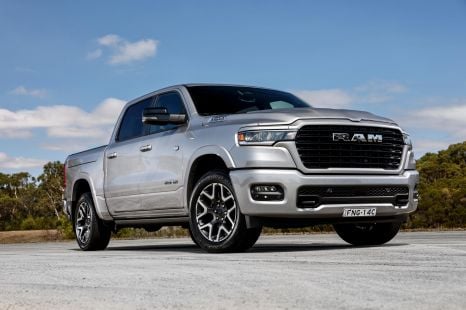

Josh Nevett
2026 Jaecoo J5 EV review
1 Hour Ago

Senior Contributor
Toyota Motor Corp has again been forced to cut a global production plan, this time for the next three months, due in large part to continued parts shortages.
The company said this week it would have to trim back its planned output over the current three-month window by at least 150,000 cars.
Its production forecast for the fiscal year (April 1 to March 31) remains unchanged at approximately 9.7 million cars, compared to 10,063,895 cars in the last fiscal year – which would mean a drop of 3.6 per cent.
But each production cut makes that goal harder to hit.

“In last month’s production plan, we announced that the average monthly production plan for the next three months (September through November) would be approximately 900,000 units,” the company said.
“However, due to the impact of semiconductor shortages, the planned global production volume for October is expected to be approximately 800,000 units (approx. 250,000 units in Japan and 550,000 units overseas).
“The global production plan for October through December is planned to average approximately 850,000 units per month.
“This plan is based on careful confirmation of parts supply and the personnel structures and facility capacities of our suppliers.”

Even assuming September hits the 900,000 target, that means the extant October and November plans are a combined 150,000 units behind forecast.
That’s another potential snag for Toyota Australia as it fights to clear record backlogs, with wait lists on many key models such as the RAV4 hybrid and LandCruiser stretching well beyond 12 months due to all-time high demand.
TMC also said it would be suspending production at 10 lines across seven plants in Japan during October, affecting models such as the RAV4, Camry, Prado, and GR Yaris. Also hit are the Lexus NX, LS, ES, RX and UX.

Toyota Motor Corp has in fact been slashing its production all year – having posted more than 20 production bulletins and subsequent amendments since January. A combination of COVID in its supply chain and ongoing semiconductor supply snags are the main reasons.
Toyota Australia dealers affected by ongoing chronic stock shortages are telling some customers to prepare for multi-year wait times on core models including LandCruiser, RAV4 and Camry.
Toyota Australia acknowledges the long waits but says there’s not really a one-size-fits-all timeframe, because each dealership has different pipelines.
“Demand for new vehicles is at unprecedented levels. In Australia, to support the strong demand, Toyota Australia been working closely with our global production teams to secure as many vehicles for our market as possible,” it said recently.

“Wait times vary depending on the model, variant and specification requirements of each customer. The RAV4 Hybrid, Camry Hybrid, LandCruiser 70 and LandCruiser 300 are in particularly high demand and currently have longer wait times.
“Due to the evolving nature of this situation, Toyota dealers are best placed to continue to provide updates to customers on delivery timeframes for individual orders.”
Toyota Australia has also removed the customer web order tracking feature from its website, instead telling customers to contact their “selling dealer” for arrival updates.
MORE: Toyota moves to increase production, cut wait times MORE: Toyota RAV4 production cut again, this time by bad weather MORE: Toyota announces more production cuts, impacting wait times MORE: Toyota dealers warn of multi-year wait times on key models MORE: Toyota suspending two plants in July, GR Yaris and RAV4 affected MORE: Toyota cuts June production, again MORE: Toyota halts production at 10 plants amid parts shortages MORE: Toyota suspends production, again MORE: Toyota, Lexus factory production slashed once again MORE: 2022 Lexus NX wait times top 12 months for hybrids MORE: 2022 Lexus LX wait list passes 12 months MORE: Toyota cuts production, takes ‘intentional pause’ for suppliers’ sake MORE: Toyota production pause, LandCruisers and RAV4 affected MORE: Toyota RAV4 shortages and wait lists remain in 2022 MORE: Toyota to cut Japanese production significantly from April MORE: Toyota cuts February production plans as COVID bites again MORE: Toyota resumes Japanese production after cyberattack

Where expert car reviews meet expert car buying – CarExpert gives you trusted advice, personalised service and real savings on your next new car.


Josh Nevett
1 Hour Ago


Josh Nevett
1 Hour Ago


Damion Smy
2 Hours Ago


CarExpert.com.au
2 Hours Ago


James Wong
3 Hours Ago


Damion Smy
3 Hours Ago